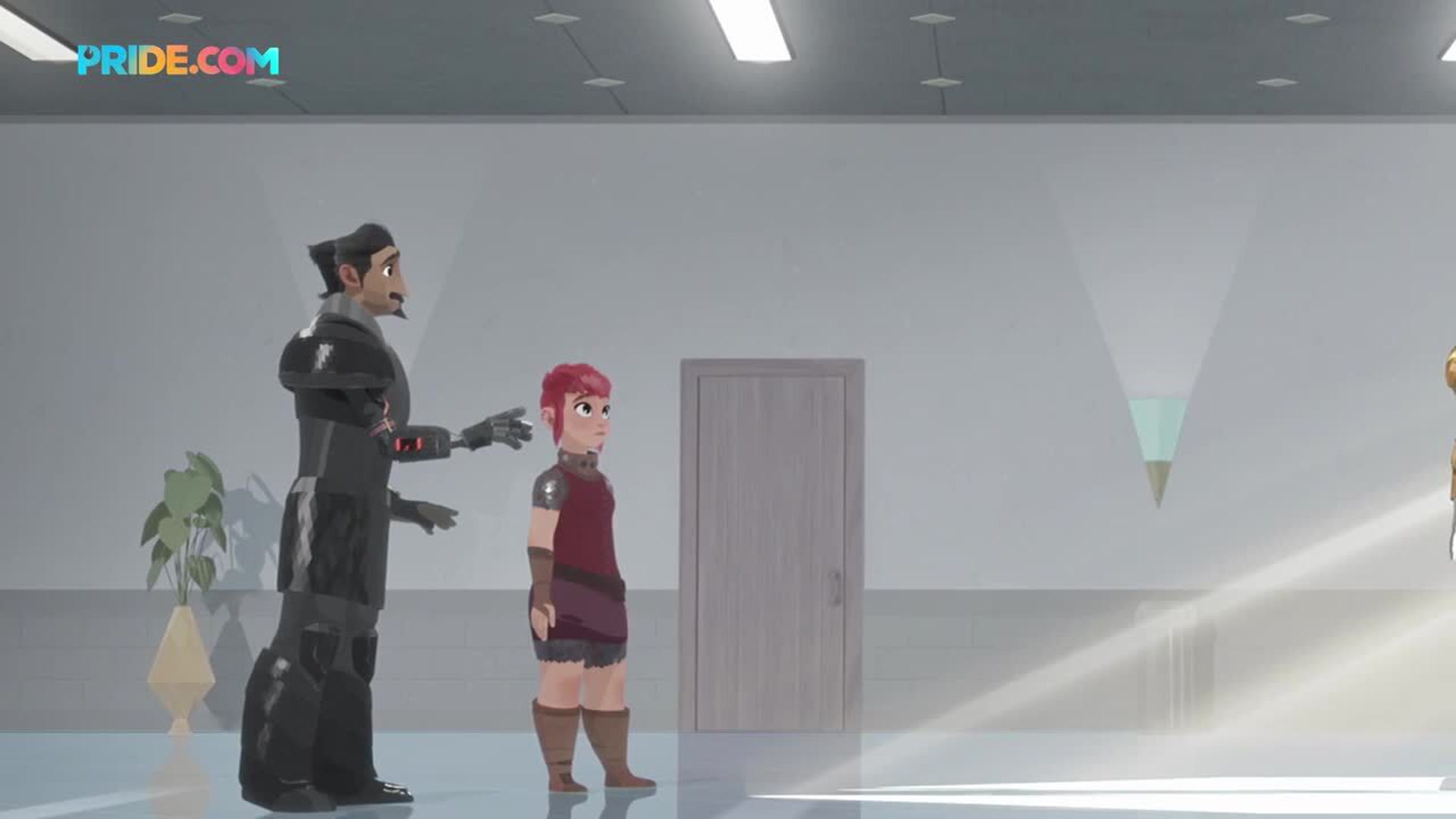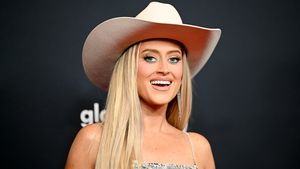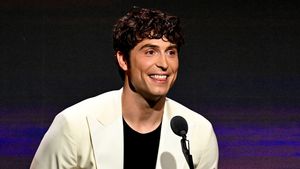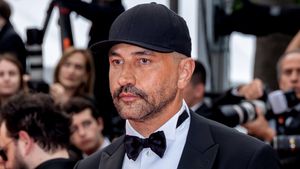ND Stevenson is the queer voice of a generation. The creator of Lumberjanes, the She-ra and the Princesses of Power series, and now Nimona has time and time again spoken with powerful clarity, fearlessness, and a deep, unflinching perspective on the struggles — but also the inherent joys — of existing as a queer person.
This remains true in Stevenson’s latest project. The animated film adaptation ofNimona, is based on a comic he first created in his teenage years. The film follows a shape- (and gender-) shifting teen outcast named Nimona (Chloë Grace Moretz) who sees the recent downfall of the (gay) Knight Ballister Boldheart (Riz Ahmed), framed for a murder he didn’t commit, as their chance to fulfill their dream of becoming a villain’s sidekick.
Nimona is chaos personified; rebellious, radical, effervescent, vulnerable, and utterly lovable. The film itself is a wonderfully charming, mad-cap adventure befitting of its namesake. Nimona is also a character that could only come from the mind of Stevenson, who created her as a bit of an escape — but she became more of a mirror than he ever expected.
“I really didn’t know the gender journey that I was going to go on. I had no idea when I was first making the comic,” Stevenson tells PRIDE. “But I’ve always had this sense of being more than my body, or just that my body is almost a part of the conversation, but not even the main part of that conversation. And so being able to be all these different things was also something, I just really wanted that. And then to be sure of myself, and then also just be able to change as often as I feel like I’m changing within myself.”
Watch PRIDE’s full Interview with ND Stevenson below.
Nimona is quite literally everything — except your stereotypically drawn heroine. Her body is powerful, agile, and beautiful, but not waifish or overly sexualized. And that is quite literally by Stevenson’s design.
“I designed a character that I would want to dress up as at the time,” recalls Stevenson. “I found it very healing to draw her body type in the pages of the comic because I was just like a very hourglass teenager and I was really uncomfortable with that. And so it felt very empowering to just get to show her in this way where she’s absolutely not constrained by her body. And she chose to look like this.”
While Nimona’s creation may have come at just the right time for its creator, the film version made it to the screen seemingly at just the right time for audiences, too. The movie has a storied history, and almost wasn’t released at all after it was dropped by Disney. Thankfully, it was saved by Annapurna and Netflix, which picked up the nearly completed film and embraced its queerness fully.
“I don’t think that any of us expected how timely this movie was going to be,” admits Stevenson. “The world has changed so much, even just in the last year — and certainly in the last 10 years since I first started working on the comic... there’s never been a better time for it.”
Those painful and even, as Stevenson describes them, “devastating” moments were all worth it to see the film come to life exactly as he envisioned it, with all its queerness and messages about radical acceptance intact. “What I love about it so much is that it feels like that saying that goes something like ‘you don’t have to understand someone fully in order to love and accept them’. That’s the message I really want people, whether they’re trans or love someone who’s trans, or don’t understand trans people at all...to take away from this, is that love isn’t conditional [and] that you don’t need to understand everything,” Stevenson shares. “Nimona is almost un-understandable; she’s everything. That kind of love is one that needs to be given whether or not you can fully get your head around it”
Nimona is now streaming on Netflix.


































































































































